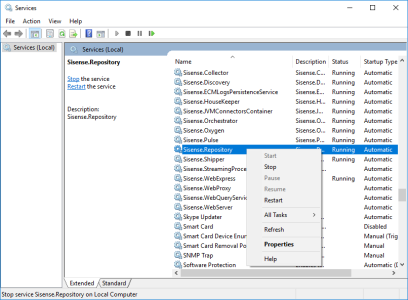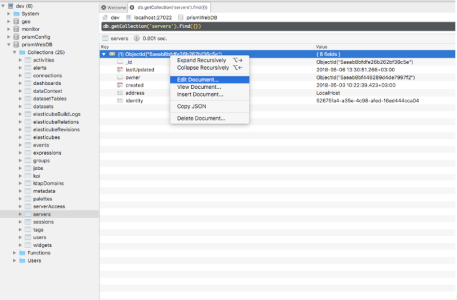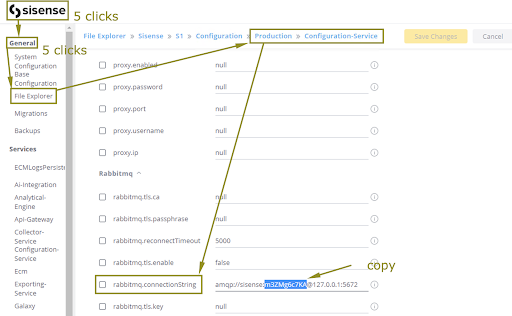Migrating Sisense System Configurations
To migrate your Sisense Web Application configuration, you must copy several directories from the current environment and migrate them to the new environment.
In addition, your Sisense application database has an identifier associated with it when you install Sisense. This identifier must be deleted when migrating Sisense as each database should have its own unique identifier. A new identifier will be generated in the environment the next time Sisense is opened. You can access the database through RoboMongo and remove the identifier as described in the procedure below.
Notes:
- The migration approach described here is for "Dev to Prod" or "Prod to Dev" migrations.
- For this type of configuration settings migration, the target and source environments must have the same Sisense version.
To migrate the Sisense Web Application:
-
On the server that you plan to migrate, open the Admin tab > REST API page. Under the admin section, use API V1 POST /app_database/change_database_user_password to set a new password for the username=WriteUser. This password will be used below.
- Back up the old environment, open your machine’s Control Panel, and go to System and Security > Administrative Tools > Services, and stop the Sisense.Repository service (this will make the website inaccessible).

- Create a copy of the entire Repository directory located at:
%ProgramData%\Sisense\PrismWeb\Repository - Replace the existing Repository directory in the new environment with the one you backed up.
- Create a copy of the entire Discovery directory located at:
%ProgramData%\Sisense\InfraNote:
The Sisense.Discovery service should be stopped before copying the directory.
- Replace the existing Discovery directory in the new environment with the one you backed up.
- In Windows Services, start the Sisense.Repository service and Sisense.Discovery service.
- Open Robomongo and connect to your Sisense application database with a WriteUser.
- Under PrismWebDB , go to the servers collection and edit the file with address LocalHost.

- Verify that the value of "identity" is the same for each application database in your configuration. It should be the same as the value in
%programdata%\Sisense\PrismServer\ServerIdentity.xml. If the values are different, update the value in the database to match the value in theServerIdentity.xmlfile.
- Open Windows Services and restart the following services:
- Sisense.Configuration
- Sisense.Galaxy
- Sisense.Gateway
- Sisense.Identity
- Sisense.Plugins
- Sisense.ECMServer
- Sisense.ECMLogs
- Sisense.Jobs
- Sisense.StorageManager
- Open the IIS Manager and restart the website SisenseWeb.
- On the target machine, back up the
C:\ProgramData\Sisense\RabbitMQ\rmq.credfile. - Copy the
C:\ProgramData\Sisense\RabbitMQ\rmq.credfile from the source machine to the target machine.
All of the following steps are performed on the target machine... - Open
http://localhost:3030-> 5 clicks on the Sisense logo in the top-left corner -> 5 clicks on the "General" tab caption. - Navigate to [File Explorer] -> [production] -> [configuration-service].
- Find the
rabbitmq.connectionStringparameter and copy the password, (found between the ":" and "@" symbols):
- Copy
C:\Windows\system32\config\systemprofile\.erlang.cookietoC:\Users\\.erlang.cookie. - Run the Command prompt as Administrator.
- Run the following commands:
cd "C:\Program Files\Sisense\Infra\Rabbitmq\sbin"rabbitmqctl.bat change_password sisense [password_from_step_16]
Example:rabbitmqctl.bat change_password sisense m3ZMg6c7KA - Restart the Sisense.Broker service. Wait for 2 minutes until it starts.
- Restart the Sisense.Configuration service.
- Go to
http://localhost:3030and click [Restart Services].
.r.